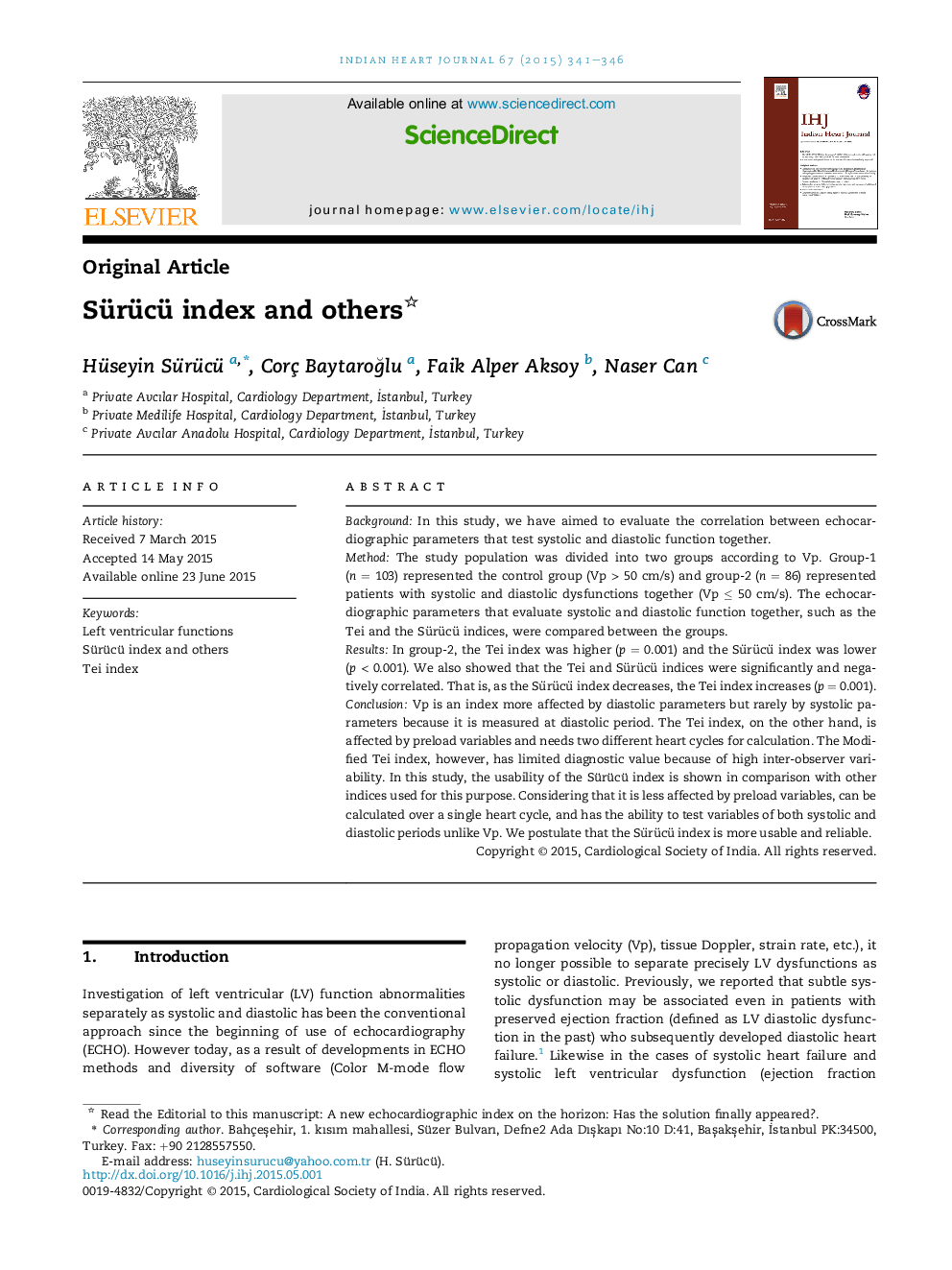| Article ID | Journal | Published Year | Pages | File Type |
|---|---|---|---|---|
| 2927431 | Indian Heart Journal | 2015 | 6 Pages |
BackgroundIn this study, we have aimed to evaluate the correlation between echocardiographic parameters that test systolic and diastolic function together.MethodThe study population was divided into two groups according to Vp. Group-1 (n = 103) represented the control group (Vp > 50 cm/s) and group-2 (n = 86) represented patients with systolic and diastolic dysfunctions together (Vp ≤ 50 cm/s). The echocardiographic parameters that evaluate systolic and diastolic function together, such as the Tei and the Sürücü indices, were compared between the groups.ResultsIn group-2, the Tei index was higher (p = 0.001) and the Sürücü index was lower (p < 0.001). We also showed that the Tei and Sürücü indices were significantly and negatively correlated. That is, as the Sürücü index decreases, the Tei index increases (p = 0.001).ConclusionVp is an index more affected by diastolic parameters but rarely by systolic parameters because it is measured at diastolic period. The Tei index, on the other hand, is affected by preload variables and needs two different heart cycles for calculation. The Modified Tei index, however, has limited diagnostic value because of high inter-observer variability. In this study, the usability of the Sürücü index is shown in comparison with other indices used for this purpose. Considering that it is less affected by preload variables, can be calculated over a single heart cycle, and has the ability to test variables of both systolic and diastolic periods unlike Vp. We postulate that the Sürücü index is more usable and reliable.
